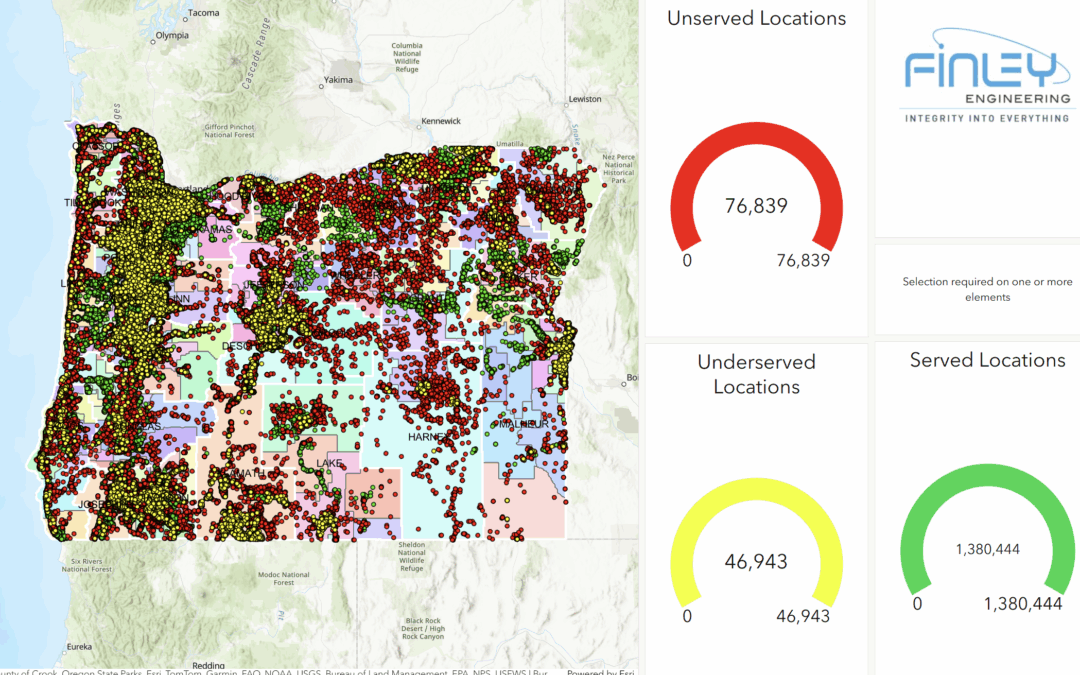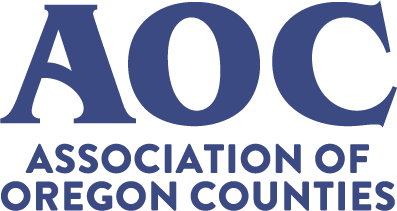
Apr 30, 2025 | AOC News, Health & Human Services
Which communities do you belong to? Who is your closest friend? What are your dreams? Who do you consider family?
These were the questions asked of members of the 2025 County College class during an exercise led by a peer support specialist at the Oregon State Hospital Museum of Mental Health. Participants began with a paper star symbolizing their support systems. As points are removed, the pieces represent how losing support can impact a life. The activity helped the group reflect on the lives of individuals receiving care at the hospital and better understand the importance of community and support systems in mental health treatment.
In addition to this exercise, the class toured the Oregon State Hospital Museum of Mental Health, which explores the history of the hospital since its founding in 1862. The museum shares stories of the patients who lived there and traces the evolution of mental health care over time.
This experience was part of the third session of County College, a program by the Association of Oregon Counties (AOC) designed to equip new county leaders with training on governance, roles, and responsibilities. The session focused on Health and Human Services — a broad and vital area where counties act as the primary link between state programs and local service delivery. As local mental health and public health authorities, counties are responsible for ensuring that public health, behavioral health, and developmental disability services are responsive to the community’s needs and work in coordination with public safety and other local partners.
“Counties have so many critical responsibilities delegated by the state that it is sometimes hard to track them all,” said Washington County Commissioner Jason Snider. “I really appreciated the thorough sessions on public health, behavioral health, and veteran services. Learning about the long and complicated story of the Oregon State Hospital also helped me connect the current challenges we face with the history of how we got here.”
Throughout the session, participants heard from a variety of agencies that partner with counties to deliver these essential services — including OSU Extension Services, the Oregon Health Authority, the Association of Oregon Community Mental Health Programs, and the Oregon Coalition of Local Health Officials. These discussions offered firsthand insights into the collaborative nature of delivering mental and public health services across the state.
Three county commissioners — AOC President and Umatilla County Commissioner John Shafer, Lane County Commissioner Laurie Trieger, and Wasco County Commissioner Phil Brady — shared their experiences in meeting behavioral health needs in their communities, offering lessons learned and success stories.
Veterans services, like health and human services, are delivered through a long-standing state and county partnership. Lincoln County Veteran Services Officer Keith Barnes provided an overview of services and assistance available to all who have served and their families
At the national level, the National Association of Counties (NACo) supports counties in the intergovernmental system. NACo’s Legislative Director Owen Hart discussed how commissioners can influence federal policy and access opportunities and resources. Gregory Nelson, director of the National Center for Public Lands Counties, provided updates on how the center coordinates with federal agencies on key issues like landscape health, wildfire mitigation, and economic development.
The session wrapped up with iSector sharing best practices on convening leaders from the private, public, and civic sectors to address challenging issues, leaving attendees inspired and better prepared to tackle pressing issues in their own counties.
Executive Director Gina Nikkel emphasized the important role of intergovernmental collaboration in addressing behavioral health. “County commissioners are uniquely positioned to act as convenors and problem-solvers within their communities,” she said. “Behavioral health is a complex issue and I’m grateful for this county college class’s commitment to understanding it and their willingness to work to strengthen how we support individuals with mental health needs.”
Special thanks to OSU Extension Services and CIS Oregon for their financial support that helps make County College possible, and to all our guest speakers for sharing their time and expertise on behavioral and public health, veteran services, and building strong partnerships that support healthy individuals, families, and communities.
For more information on County College visit: https://oregoncounties.org/ed-events/#countycollege
Contributed by: Erin Good | Communications Coordinator

Apr 29, 2025 | AOC Business Partner
Sponsored content contributed by AOC Business Partner: Nationwide
In April, Nationwide celebrated National Financial Literacy Month by offering resources to help you spring forward in your financial journey. It’s the perfect opportunity to establish fresh financial habits and grow your financial knowledge.
Whether you are just starting your work career, approaching or living in retirement, there are always ways to improve your financial literacy. National Financial Literacy Month was about helping you improve your financial know-how.
Nationwide and their Supplemental Retirement Plan offer the following tips to help you grow your financial literacy at any age.
College students and early career
- Plant the seeds of savings in your budget
- Cultivate an emergency fund that can cover 6 months of living expenses
- Begin saving for retirement early, and nurture your savings with small increases each year
Midcareer
- Trim your budget as needed to stay on track for your goals
- Evaluate your savings options to determine whether they’re still appropriate for you
- Regularly review your financial goals and track your progress
Nearing retirement
- Start planning a retirement budget that accounts for changes in income and expenses
- Grow an emergency savings fund that can cover 1 to 2 years of expenses
- Log in to your Nationwide Retirement Plan account
- Use My Income & Retirement PlannerSM to help you plan a withdrawal strategy
- Work with your Retirement Specialist to help your retirement plans blossom at no additional charge
Retirees
- Maintain but adjust your budget as needed
- Consider additional income sources, especially in the early retirement years
- Revise your withdrawal strategy as your financial needs change
- Keep tabs on legislative changes that may affect you
- Complete estate planning to ensure your assets are distributed according to your wishes
These are just a few tips that workers and retirees found helpful. Nationwide can help you put together a financial literacy plan that works for you and your family.
Plant the seeds for a prosperous financial future.
For more information and resources visit Nationwide’s Financial Literacy Month webpage.

Apr 29, 2025 | AOC News
During the 2024 Annual Conference, the Association of Oregon Counties (AOC) President John Shafer (Umatilla County) announced his 2025 presidential initiative to focus on behavioral health. Shafer’s presidential initiative kicked off in January with a series of monthly challenges.
June challenge: Coordinated Care Organizations (CCOs) partner with local mental health authorities to ensure that their communities get the most value from their Medicaid and county services. CCOs are responsible for managing Oregon Health Plan (OHP) members’ medical and behavioral health care by maintaining an adequate care network, providing care management, and paying providers for covered services. This month, schedule lunch with your local CCO director(s) to find out what’s top of mind for them and discuss coordination in the year ahead.
Stay tuned for additional learning opportunities throughout the year and a celebration at the 2025 AOC Annual Conference.
###
Previous challenges
January: Read this short primer on local mental health governance in Oregon, authored by Malheur County Community Mental Health Program (CMHP) Director Steve Jensen, and hear a brief presentation by Greater Oregon Behavioral Health (GOBHI) CEO Ann Ford at the AOC Legislative Committee meeting, held on Monday, Jan. 13. (presentation slides)
February: Whether you know your CMHP director well, or will be meeting them for the first time, your February challenge is to invite them to lunch, say ‘thank you,’ and listen. You’ll be glad you did. Our community mental health program directors are among the most dedicated, hardworking public servants in Oregon and a tremendous resource to the local mental health authority — you! Strong relationships are the bedrock of mental wellbeing and of good governance.
March: Tour your community mental health program
There is no substitute for being physically present and able to use all five senses. Make some time with your director this month to walk through your local facilities, meet the staff, and learn more about your program’s current strengths and challenges that you can help champion at AOC, the Local Government Advisory Committee, and with our state and federal partners.
April: Join this year’s County College class virtually on Thursday, April 17, at 4:30 p.m., for a discussion with AOC President and Umatilla County Commissioner John Shafer. Shafer will discuss his presidential initiative, including best practices for prioritizing behavioral health to equip counties to exercise their local mental health authority and foster healthy, vibrant, and safe counties across Oregon.
May: It’s Mental Health Awareness month! Partner with your Community Mental Health Program during the month of May to promote mental health in your county. Engage with your congressional delegation, publish a letter to the editor, or pass a resolution recognizing May as Mental Health Awareness Month. The National Association of Counties (NACo) provides templates for a press release, letter to your members of Congress, social media post and more in their outreach toolkit.

Apr 25, 2025 | AOC Business Partner
Sponsored content contributed by AOC Business Partner: Finley
Bringing Better Broadband to Oregon’s Counties
The Broadband Equity, Access, and Deployment (BEAD) Program represents Oregon’s most significant opportunity in a generation to bridge the digital divide. As counties throughout the state evaluate the best ways to deliver high-speed internet to unserved and underserved regions, the Association of Oregon Counties has a vital role to play — and Finley is ready to assist.
What is BEAD?
BEAD is a federal program that aims to expand high-speed internet access for every American, especially in rural and underserved areas. Oregon’s BEAD initiative is managed by the Oregon Broadband Office (OBO), which has divided the state into coverage areas aligned with the school district system.
Oregon received $689 million of funding through BEAD, based on metrics like service availability and need, and is currently deploying those funds. The 2020 SNG report to the OBO highlighted how widespread the need is, particularly in rural counties. This report clearly shows the demand for reliable connectivity and reinforces that Oregon will still fall short even with BEAD funding. Access the OREGON Broadband Study here.
Discover how Finley can help your county connect by clicking on “The Finley Connection.”
Why It Matters to Your County
Your county stands to gain tangible and measurable benefits from BEAD-funded broadband expansion in several ways.
Tourism: By directly contributing $14 billion and 118,000 jobs, tourism and broadband connectivity help to generate revenue for Oregon counties. Increased connectivity and tourism foster an environment that attracts visitors, remote workers, and events, encouraging Oregon’s guests to stay longer and spend more, ultimately enhancing your county’s success.
Improved Metrics: Better connectivity means improved access to healthcare, education, and economic opportunity for all Oregonians.
Agricultural Advancements: Modern agriculture depends on reliable internet, from cattle tracking, wheat storage, production automation, and irrigation systems.
Economic Growth: Studies show a clear link between broadband expansion, increased county GDP, increased tax base, job creation, and long-term generational prosperity. (See: CORI Report)
IoT Innovations: From soil sensors to automated chemical-free weed control to grain bin automation, modern ag tech depends on strong broadband infrastructure.
How Your County Can Shape BEAD’s Success
Depending on goals, resources, and local conditions, counties can engage with BEAD in multiple ways.
Public-Private Partnership: Directly apply for BEAD funding and subcontract providers to meet county-set goals.
Public Ownership: Apply to OBO to build a publicly operated broadband network.
Commit Matching Funds: Facilitate a local RFI or RFP process and back the provider(s) who align with your county’s priorities.
Show Support: Provide letters of support or advocacy for private applicants requesting funding.
Each approach offers benefits, but also complexities.
What Comes Next?
Now is the time for counties to take action:
Engage with the OBO: Learn the latest on your area’s eligibility and advocate for your community’s unique needs.
Understand the Process: The BEAD program is technical, jargon-heavy, and fast-moving. Ensure you have the right knowledge and allies on your side.
Utilize Expert Partners: This is where Finley can help.
At Finley, we focus on assisting counties like yours in navigating the broadband process—from identifying funding opportunities and forming partnerships to creating strategies that align with local priorities.
We have partnered with clients nationwide, giving us the insight and experience necessary to support your county at every stage. From public-private partnerships to grant writing, engineering design, and community engagement, Finley is your advocate in BEAD.

Apr 25, 2025 | AOC Business Partner
Sponsored content contributed by AOC Business Partner: Covenant Global
Securing data from cyberattacks is no longer a background issue — it’s an urgent and daily concern for individuals, government entities, and critical infrastructure. Cyber threats targeting local governments have surged, with attacks leaking personal data to the dark web, exposing vulnerabilities in infrastructure, or deploying undetected malware like Project Sauron — which operated silently for five years.
Oregon’s municipalities are under pressure to defend against constant and sophisticated attacks, all while staying compliant with a growing list of regulatory frameworks. The State of Oregon’s Cyber Security Plan outlines mandatory compliance with frameworks like:
- FTI (taxpayer information)
- HIPAA (health records)
- FERPA (education records)
- PCI-DSS (payment data)
- CJIS (criminal justice)
At first glance, the number of overlapping standards may seem overwhelming, if not impossible to track. Adding to the pressure, the plan also mandates alignment with National Institute of Standards and Technology (NIST) 800-53, a deep catalog of 1,500+ security controls. But here’s the good news: most of these frameworks are built on NIST 800-53. Understanding this simplifies compliance, turning a complex challenge into a manageable checklist.
NIST 800-53 isn’t just another requirement — it’s the foundational blueprint trusted by federal agencies and adopted by leading states. It provides the widest range of security controls, purpose-built for diverse government scenarios. That’s why Oregon chose it—and why local governments can trust it to scale with their evolving needs.
Additionally, the NIST Cybersecurity Framework (CSF) helps municipalities not only select the right controls but also implement them strategically. These tools work in tandem:
- 800-53 = the “what” of security
- CSF = the “how” of implementation
A great example? The Lower Colorado River Authority (LCRA) successfully leveraged both to harden infrastructure while simplifying compliance.
The bottom line: Oregon municipalities don’t need to reinvent the wheel. By aligning with the NIST 800-53 and CSF — both purpose-built by U.S. authorities for public-sector resilience — counties can efficiently secure systems, simplify compliance, and better protect their communities. Now is the time to act.
Contributing Author: Daniel Dolinov, Senior Compliance Consultant, Covenant Global





